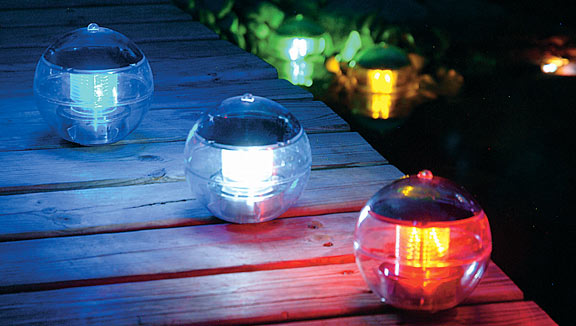Structure and principle of solar lights

Since the 20th century, with the social and economic development and people’s living standards improve, the demand for energy is growing. The limited nature of fossil energy resources, and influence them in the combustion process on the global climate and the environment arising from the growing concern for people. From the demand of resources, the environment, social development, the development and utilization of new and renewable energy is an inevitable trend. With the rapid growth of China’s economy, a substantial increase in demand for energy, particularly electricity further exacerbate tensions, to seek new energy and renewable energy imminent. Solar energy is a very important renewable energy, solar energy and solar lights is the kind of application products, along with the increasing rise of urban lighting project, which gives the popularization and development of solar lights, paving the way. Solar lights by solar panels during the day the sun’s light energy into electrical energy, and stored. In the evening, by the light emitting element and the electrical energy into light of a new product. Currently, solar panels polycrystalline silicon and monocrystalline silicon have two kinds. China has been able to mass production. Energy storage is served by a rechargeable battery or batteries. Charging and discharging process is controlled by a certain design of the circuit. Where there is sunshine occasions, you can use solar energy solar lights generally composed of lighting (LED), solar batteries, solar controller, battery and other accessories.
The solar system, the highest part of the value. Its role is to the sun’s radiant energy is converted to electrical energy stored in batteries and then sent to, or promote the work load. Quality and cost of the solar array will directly determine the quality and cost of the entire system. Polysilicon material currently used in solar cells, mostly a collection contains a lot of single-crystal particles, or waste time monocrystalline silicon materials and metallurgical grade silicon material from melting casting. The process is to select a resistivity of 00 ~ 300 Ω · cm polycrystalline or monocrystalline silicon blocks end to end material, by crushing, hydrofluoric acid and nitric acid :5 mix together appropriate etching solution, then washed with deionized water wash was neutral, and dried. Quartz crucible installed polysilicon materials, adding an appropriate amount of boron silicon, into the casting furnace, heated and melted in a vacuum state. Insulation should be melted for about 20 min, and then injected into a graphite mold, to be slowly cooled and solidified to obtain polycrystalline silicon ingots. The silicon ingot can be cast cubes to slice processed into a square film solar cells, in order to improve material utilization and easy assembly. Polycrystalline silicon solar cell production process and almost single crystal silicon solar cells, about its photoelectric conversion efficiency of about 2%, slightly lower than silicon solar cells, but the material is simple, to save power consumption, lower overall production costs, thereby obtaining a lot of development.
The silicon raw material into the melt pool were melt cast to form a stable state after cooling of the polycrystalline cylinder, we call it an ingot. Then, breaking the ingot and slicing solar cell processing. On the basic pieces are cut will be the formation of a potential of p-type and n-type process. In addition, the cells get to obtain the current printed electrodes form a solar cell sheet. Even monolithic solar cells can produce electricity, but in order to obtain a higher voltage, it must group with cells in series, and in order to obtain high strength and weather resistance, solar cells installed in the surrounding glass, sealed wood and aluminum frame. Thus to get the final solar cell panels.
Principles: First, to meet the night lighting under the premise, the energy as much as possible during the day a solar cell module stored, but also capable of storing electrical energy to meet the continuous rainy days night lighting needs. Battery capacity is too small can not meet the needs of lighting at night, the battery capacity is too large, while the battery is always in a state of loss of electricity, affecting battery life, while wastage. 5 Lighting (LED) currently most solar lights use LED as a light source, LED long life, up to 00 000 h or more, low voltage, very suitable for use in solar lights on. Especially LED technology has achieved its key breakthrough, its characteristics are greatly improved in the past five years, the cost performance has greatly improved. In addition, LED by the low voltage DC power supply, low cost and light control, adjust the brightness, frequent switches are possible, and should not adversely affect the performance of the LED. Control the color, changing the distribution of light, resulting in dynamic mirage is possible, so it is particularly suitable for application in solar garden light.
About Letect Solar Garden Lights, China:
Letect Electronic Technology Co., Ltd. was founded in 2002, which is Chinese professional manufacturer of many kinds of solar garden lights and other outdoor solar lights since 2002, supply quality products at competitive prices. We would like to be your reliable supplier and trusted friends. Thank you for your attention!
Our advantages:
Develop 100 new products per year, More than 97.5% qualification rate, Timely delivery & competitive prices, Export & logistics one-stop services, Custom outdoor solar garden lights.
Adam Zhou
Letect Electronic Technology Co., Ltd
Address: Ningbo Industrial Park, Ningbo City, Zhejiang Province, China.
E-mail: [email protected]
Mobile: +86 15057403797
Fax: +86 0574 63018941
Website: www.cn-solargardenlights.com
Skype: adam_solarlights
Facebook:
Solar Light Manufacturers | Solar Lantern Manufacturers | Solar Lights China
